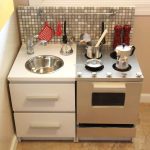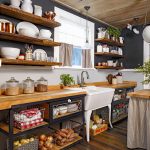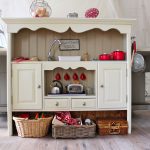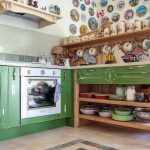Making kitchen furniture with your own hands
Any thing made with your own hands brings a special comfort and warmth to the house. Well, if we are talking about furniture for the kitchen, then it will also become a source of pride. How to make kitchen furniture with your own hands? Where to begin? What tools and materials are required?

The pros and cons of handmade furniture
In addition to the aesthetic and spiritual (or rather, mental) component, there are quite tangible advantages of handmade furniture:
- You make the model you like;
- If desired, the shortcomings that become apparent later can be eliminated on their own;
- Even in the process of work, it is possible to change the original layout, without unnecessary nerves, without proving anything to anyone;
- Decorating options depend only on your imagination and capabilities;
- The quality of work is in your hands;
- There is an opportunity to save money.

The disadvantages are very controversial: first of all, it is a cost of time and effort. But, if you look at it from the other side, for some it becomes a pleasant pastime. And if the family has children, then making furniture can be a pleasant joint activity.

Choosing materials
The material is selected based on your financial capabilities. In addition, the conditions for the further operation of the kitchen set should be taken into account.

Possible options:
- Solid wood. As they say, this is a classic of the genre. A reliable, beautiful option.
- Particleboard is a budget option.
- Old furniture is a completely free way to get a new set. But this option is only suitable if you have certain skills in woodworking. Because redoing is always more difficult than making from scratch.

Before getting to work (no matter what material you prefer), be sure to read the information on how to make something from this material.
Solid wood
It is natural and environmentally friendly. Differs in a unique texture and color scheme. Strength is considered the main advantage of solid wood. Depending on the type of wood, the product can be used from 15 years to several decades.

Of the shortcomings, most often called the high cost of the material, as well as sensitivity to changes in humidity and temperature. Requires treatment with various impregnations and antiseptics.

However, according to the happy owners of natural wood furniture, these disadvantages are very relative, but the opportunity to enjoy the comfort and beauty of a kitchen set made of natural wood is priceless.

Chipboard
There is a choice: either domestic chipboard or imported analogue. In the opinion of the majority, imported chipboard is superior to the domestic one in density, since it contains a greater percentage of paraffin and glue.
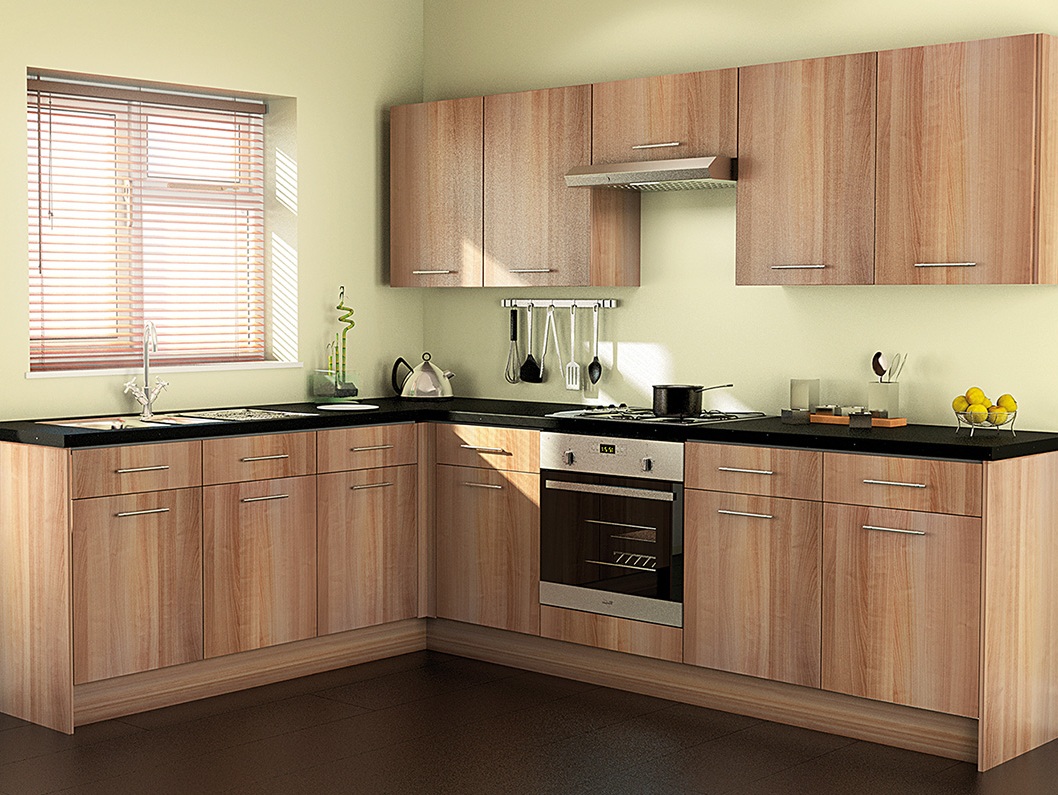
Speaking about the advantages of chipboard, the ease of processing is invariably mentioned. From this material you can easily "carve out" a detail of any shape.

Well, there is only one drawback: if the material is of poor quality, then it will be fragile, and it will also exude an unpleasant odor.

Chipboard
A better analogue of chipboard, the only difference is that the surface is covered with a protective film (laminated). This material is cheaper than MDF and performs well in harsh operating conditions.

The only caveat: if the moisture-resistant film was applied by caching, then over time it will lag behind the plate.
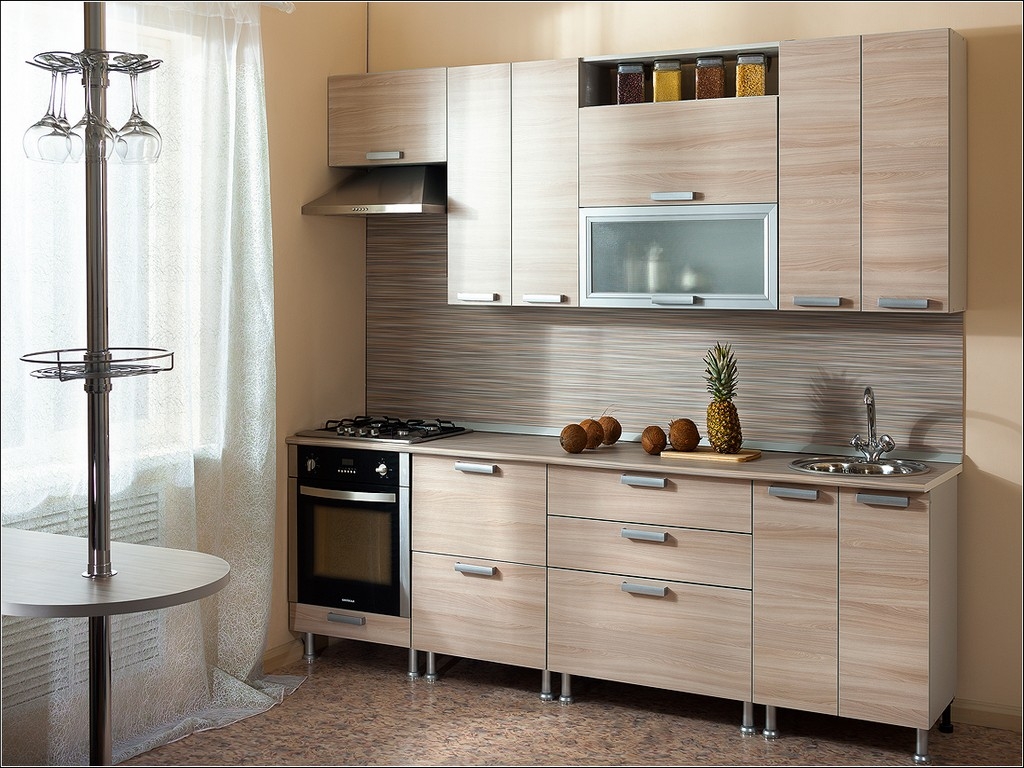
MDF
This modern material can surpass even natural solid wood in terms of density. Compared to chipboard, MDF is a more flexible and durable material. Decorative elements can be made from it, and it is also convenient for molding.

The disadvantages include the need to paint the MDF surface, as well as the cost - this material is more expensive than chipboard.

Drywall
This building material is a sheet of several layers of construction paper with an interlayer of gypsum dough with additives. Despite its lightness, the material is resistant to stress and guarantees a long service life. Parts of a wide variety of shapes can be made from it.

And yet, despite its endurance, drywall is fragile, so you need to work very carefully. It is also better to calculate in advance the load that the kitchen set will have to withstand, the large weights of the drywall are not on the shoulder.

Instruments
The minimal set of tools looks like this:
- Hand and electric saws;
- Jigsaw;
- Screwdriver;
- Fraser;
- Drill;
- Sander;
- Plane;
- Hammers, chisels, chisels;
- Measuring devices and tools.
Stages of work
First, we draw up a detailed drawing, preferably on graph paper. You can use a computer program. The main thing is that as a result it is obvious to you how many parts and what size you need.
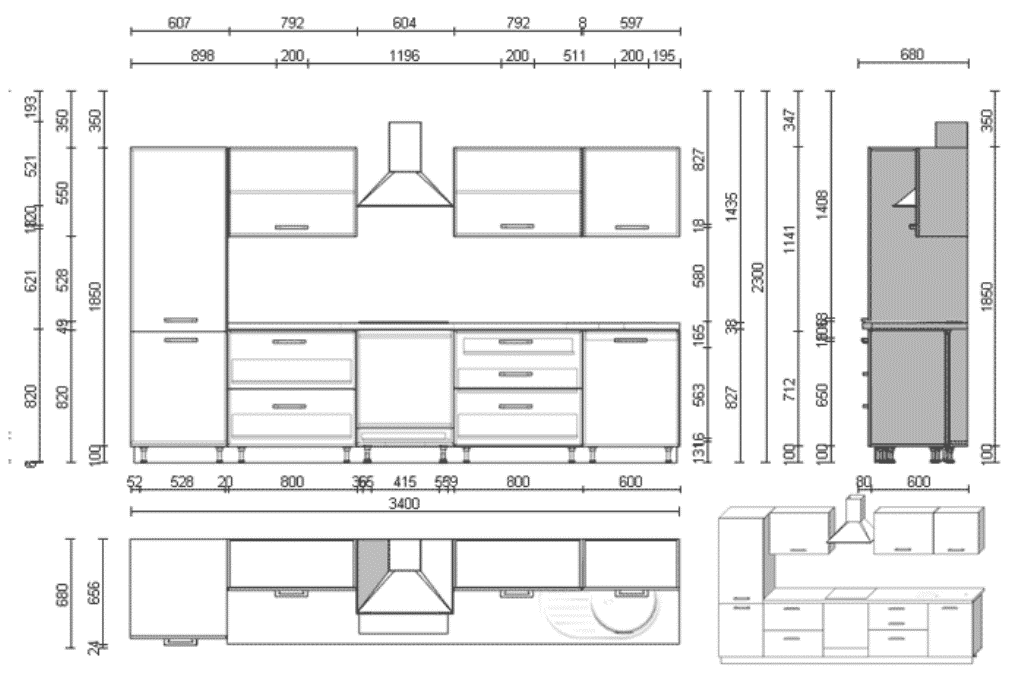
Important: when making an ordinary kitchen cabinet, it is possible to save money by making the back wall from plywood, and not from MDF or chipboard.
After making the necessary calculations, you can go to the store for the material. By the way, some chipboard companies offer cutting services. Believe me, it will be better if the details are cut by a professional. The service is inexpensive, and as a result, you will save both time and nerves (especially if you are engaged in the creation of furniture for the first time). And don't forget to get the accessories you need.

Now you can start assembling.First, it is better to check the dimensions of the parts again, and if something "slightly" does not match, adjust it. Then process the visible ends with an edge (this applies to furniture made of MDF and chipboard).

The back panels can be attached to the plywood with a construction stapler. With the help of a special cutter, grooves are made on the facades for the installation of hinges. The hinges are fixed with self-tapping screws. The final adjustment of the hinges is done with a screwdriver.

Of course, this is just a general assembly diagram. It may differ depending on the model of the cabinet and on the material from which it is made. One thing is clear: it is quite possible to make kitchen furniture at home. With a little time and effort, and your dream headset is ready.
Video: DIY kitchen furniture making





